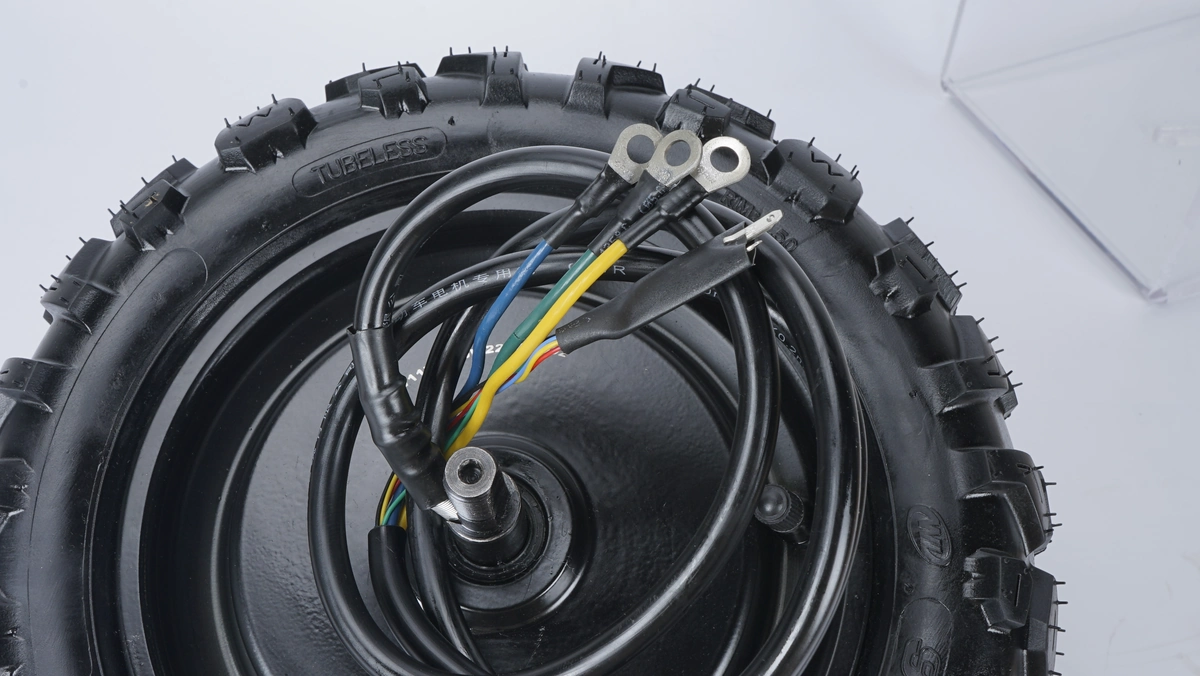Whenever hub motors are mentioned, some people may think that this type of motor is relatively weak. Some people also believe that comparing mid-drive motors and hub motors is like trying to compare apples and oranges, just a matter of choosing based on budget or preference. However, for cyclists who want to buy electric assist bicycles, it is better to have a better understanding of more professional knowledge.
Not only is it difficult to compare hub motors and mid-mounted motors, there are also differences between different hub motors. Even the same type of hub motor can be further divided into different subcategories. Just like mid-mounted motors have light assist and full assist power units, hub motors also have different driving modes, with design concepts that are even more different from mid-mounted motors.

Generally speaking, the volume of direct-drive hub motors is larger and heavier. They are not driven by internal gearboxes or flywheels, but directly transmit force to the wheels. This type of hub motor is mainly used for niche cargo electric assist bicycles, so this article will not discuss it in detail, but will focus on geared hub motors. Geared hub motors are actually the standard solution for lightweight-oriented electric assist road bikes, gravel bikes, and city bikes. Geared hub motors are typically smaller, lighter, and have internal gearboxes.
Hub motors have advantages in design, but in the actual riding process, numerous external factors can affect the working mode and performance efficiency of hub motors, leading to many misunderstandings about hub motors.
In some "stereotypes", the mid-drive motor has always been synonymous with high technology. A long time ago, when you walked into a bicycle shop, the first thing you saw was electric bikes with lower prices and cheap hub motors, which did not have much "high-end" new technology. But in terms of technology, modern new hub motors are not necessarily inferior to mid-drive motors. If equipped with high-tech systems and auxiliary devices commonly used in mid-drive motor systems, hub motors can also provide high performance. With the continuous development of hub motor technology, many products already have sensors similar to mid-drive motors, such as torque and cadence sensors, speed and acceleration sensors, tilt sensors, etc., which can record data and upload it to software, with a level of detail comparable to mid-drive motors. In addition, even functions such as independently adjustable connectivity and modular battery design can be found on electric bikes with hub motors.
Whether it is a hub motor or a mid-drive motor, there are products for the corresponding low, medium, and high-end markets. However, the current mainstream view is that hub motors are usually used for inexpensive electric-assist bicycles, while high-end electric-assist bicycles without exception will use mid-drive motors. The market trend is now changing, and the electric-assist bicycle market is presenting a completely different picture from before. Although the electric-assist bicycle market is flooded with a large number of low-cost hub motors, for manufacturers in the high-end segment market, the motor system is not the only factor determining the overall vehicle price.
Hub motors and mid-drive motors have different weight distributions, and this fact is undeniable. For electric assist bicycles, mid-drive motors are installed between the wheels with a lower center of gravity, which is generally beneficial. When a hub motor is installed, most of the weight shifts to the rear wheel. However, most riders hardly feel the difference, only some riders who are very sensitive to weight distribution will notice the difference. Currently, electric assist bicycles using hub motor systems have a high degree of design freedom in terms of frame design, geometry, overall weight, etc. In actual riding tests, we only need a short time to adapt to the weight distribution of the hub motor system.
Due to the difference in weight and shape, hub motors are often considered to have weak power, while mid-mounted motors are synonymous with strong power. Currently, intuitive torque and weight data have become the focus of many people, but they themselves are not decisive in influencing the performance of the motor system. Because hub motors directly apply force to thewheels without the losses generated by the transmission system, even if the commonly seen data on paper is poor, it does not mean that the actual output of hub motors is weak.
Nowadays, the electric motor systems of electric assist bicycles on the market are relatively mature, with a dazzling array of technologies, sensors, and functions. However, it is important to note that whether an electric assist bicycle is good to ride is not solely attributed to the motor system. There is no best motor product or best motor system. A motor system is the best when installed on an electric assist bicycle that can fully utilize its advantages. Contrary to many rumors in the cycling world, mid-drive motors and hub motors are not specific to certain types of bicycles, nor are they superior or inferior. Due to differences in bike design, operating modes, and rider habits, even the same motor system cannot perform the same on different vehicles.
Leave A Comment